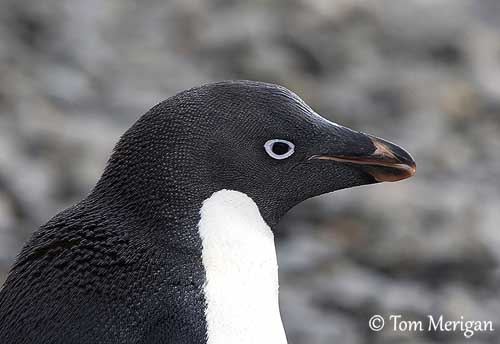

Tom Merigan
Tom Merigan’s Photo Galleries
BOUVET ISLAND BIRD SPECIES
and PETER I ISLAND
Norwegian Subantarctic Islands
Bouvet Island is a subantarctic volcanic island located in the South Atlantic Ocean, 2,600 kilometres S-SW of the coast of South Africa, and about 1,700 kilometres of Antarctica (Queen Maud Land).
This island is a dependency of Norway, and the most remote island in the world.
This island is about 49 square kilometres. It is covered by a glacier which is 93% of the global surface. In the centre, there is an inactive volcano with ice-filled crater. Some small rocks can be seen along the coast, but only one, Nyrøysa, allows to land.
Bouvet Island was discovered first on 1 January 1739 by Jean-Baptiste Charles Bouvet de Lozier. After several disputes about the coordinates and the existence of this island sometimes considered a phantom island, the first Norvegia expedition landed there in 1927, and this area was claimed dependency of Norway in 1930.
Bouvet Island is a nature reserve since 1971 and is uninhabited.
The Antarctic climate is dominated by heavy clouds and fog, and weak west wind. Bouvet Island is an Important Bird Area as a breeding ground for seabirds, but any endemic species.
Peter I Island is also an uninhabited, remote island, located in the Bellingshausen Sea, S of the Pacific Ocean, at about 400 kilometres off the Antarctic coats. This small volcanic island is about 156 square kilometres.
The extinct volcano rises up to 1755 metres above the sea-level. Most of the island is covered by permanent ice and snow, and surrounded by pack ice almost all the year. During summer, three small rocky beaches may appear.
Peter I Island was discovered in January 1821 by a Russian expedition of exploration, but the first landing occurred in 1929 by the second Norvegia expedition. The island was claimed for Norway.
Small numbers of Adelie Penguin and Chinstrap Penguin have been observed, along with South Polar Skua and Southern Fulmar.
List of the 33 bird species:
Adelie Penguin - Pygoscelis adeliae - Manchot d’Adélie
Antarctic Petrel - Thalassoica Antarctica - Pétrel antarctique
Antarctic Prion - Pachyptila desolata - Prion de la Désolation
Antarctic Tern - Sterna vittata - Sterne couronnée
Atlantic Yellow-nosed Albatross - Thalassarche chlororhynchos - Albatros à nez jaune
Black-bellied Storm-Petrel - Fregetta tropica - Océanite à ventre noir
Black-browed Albatross - Thalassarche melanophris - Albatros à sourcils noirs
Blue Petrel - Halobaena caerulea - Prion bleu
Brown Skua – Stercorarius antarcticus - Labbe antarctique
Cape Petrel - Daption capense - Damier du Cap
Chinstrap Penguin - Pygoscelis antarctica - Manchot à jugulaire
Common Diving-Petrel - Pelecanoides urinatrix - Puffinure plongeur
Fairy prion - Pachyptila turtur - Prion colombe
Great Shearwater - Puffinus gravis - Puffin majeur
Grey-headed Albatross – Thalassarche chrysostoma – Albatros à tête grise
Kelp Gull - Larus dominicanus – Goéland dominicain
Kerguelen Petrel - Aphrodroma brevirostris - Pétrel des Kerguelen
King Penguin - Aptenodytes patagonicus - Manchot Royal
Light-mantled Albatross - Phoebetria palpebrata - Albatros fuligineux
Macaroni Penguin – Eudyptes chrysolophus – Gorfou doré
Northern Giant-Petrel – Macronectes halli – Pétrel de Hall
Parasitic Jaeger or Arctic Skua - Stercorarius parasiticus - Labbe parasite
Slender-billed Prion or Thin-billed Prion - Pachyptila belcheri - Prion de Belcher
Snow Petrel - Pagodroma nivea - Pétrel des neiges
Soft-plumaged Petrel - Pterodroma mollis - Pétrel soyeux
Sooty Albatross - Phoebetria fusca - Albatros brun
Southern Fulmar - Fulmarus glacialoides - Fulmar argenté
Southern Giant Petrel - Macronectes giganteus - Pétrel géant
South Polar Skua - Stercorarius maccormicki - Labbe de Mc Cormick
Wandering Albatross - Diomedea exulans - Albatros hurleur
White-chinned Petrel - Procellaria aequinoctialis - Puffin à menton blanc
White-headed Petrel - Pterodroma lessonii - Pétrel de Lesson
Wilson’s Storm-Petrel - Oceanites oceanicus - Océanite de Wilson
Photographer:
Tom Merigan
Tom Merigan’s Photo Galleries
Text by Nicole Bouglouan
Sources :
Wikipedia, the free encyclopaedia
Bouvet: The Most Remote Island in the World